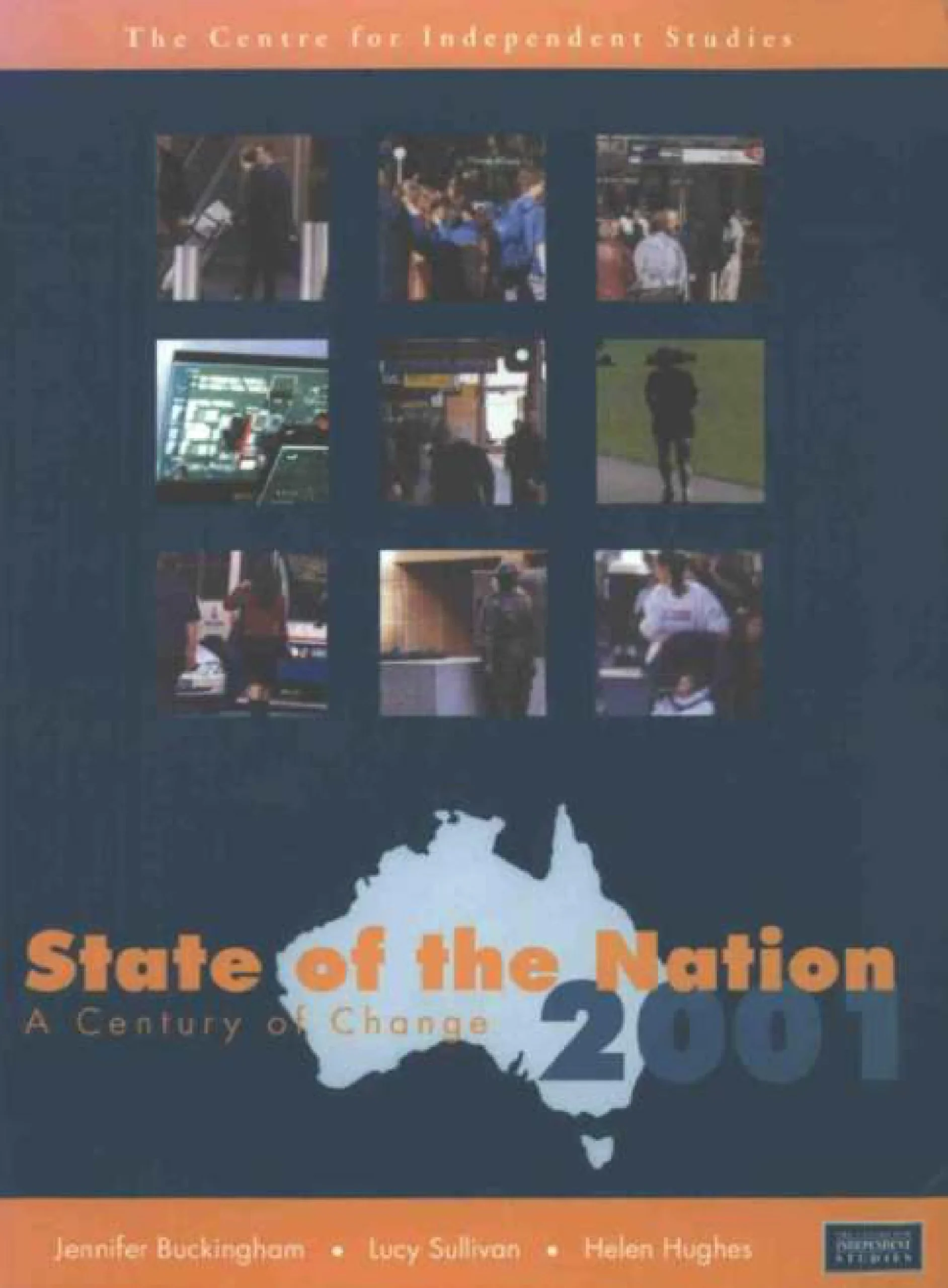
The first edition of State of the Nation in 1997 showed in graphs and statistics, with accompanying commentaries, how much Australia had changed from the Australia of 100 years ago, or 50 years ago. or even 25 years ago. A second, substantially expanded edition was published in 1999. revealing continuing, even accelerating change — sometimes for the better, sometimes for the worse. At that time, new trends were identified tentatively, given the short time lapse.
There are no such limitations in 2001. This third edition of State of the Nation demonstrates that Australia is a country in the midst of profound social and economic change. For the most part, quality and duration of life have improved. Australians arc, on average, wealthier, healthier, better educated and more active than ever before. Yet the picture is not entirely rosy. Where there have been changes for the worse, these have been dramatic and unrelenting. The family as the primary economic and social unit is still under threat, crime has escalated. and drug use has continued to rise unabated. It is hard to believe these trends are not connected.
Previous editions of State of the Nation have been very well received as fulfilling the need for a publication that brings together, in one volume, statistical evidence and informed commentary on the major aspects of society and the economy. This new edition
is even more comprehensive and up-to-date than the second edition. It is useful either alone or in accompaniment with the previous editions. Because of the increased breadth of material, several new sections have been added. Section 3 deals with the changing
circumstances of children and families, and Section 9 provides details on Communication and Technology. The Economy section has again been substantially expanded, reflecting the increased interest in, and community awareness of economic issues.
The usefulness of a publication such as State of the Nation lies in the contribution it can make to informed public debate of social issues and government policy. More generally, it is a source of reliable information on a host of subjects of intrinsic interest to the
general reader as well as to those with a professional or scholarly purpose, such as academics, students, journalists, politicians, and many others. Many of the trends depicted in this volume will be familiar, and the graphs and text will serve to confirm and quantify. Some graphs may surprise, while others will challenge what people have been led to believe.
Data from the 2001 Census is not yet available, and the last Census was in 1996. On subjects where data is collected only at Census, graphs could not be updated. Graphs based on the 1996 Census have therefore been included only if they provide an important
perspective.
An effort has been made to trace each statistical indicator over as long a time period as possible. In some cases, whether due to changes in recording and publication, or because the developments concerned are recent (such as information technology), only a short scries is obtainable. An added impediment is the high cost of purchasing data that the Australian Bureau of Statistics has not published for public use.
The first edition of State of the Nation relied almost entirely on information available in the Australian Bureau of Statistics’ Yearbooks. In recent years, the Yearbooks have become less consistent in their presentation of data and. because they are published annually, often do not contain the most recent available data. In this edition, a wide range of sources has been used to provide the broadest scope and most recent information available.
The decision to prepare and publish State of the Nation arose out of the work that The Centre for Independent Studies (CIS) has done in gathering essential and background data over several years as part of its continuing “Taking Children Seriously” programme of research, publication and other activities. It will be seen that much of the material in this, as in previous editions, such as data on marriage, divorce, school education, juvenile crime and so on, is closely related to issues affecting the well being of children, which is the primary focus of the “Taking Children Seriously” programme.
In 2001, CIS embarks on a new programme of research that follows on from “Taking Children Seriously”. This new programme, “Social Foundations”, inherits an impressive and widely influential body of work on children and families, and extends the reach of
such work into adolescence and young adulthood. This third issue State of the Nation provides ample evidence of the need for such a programme at this time.
— Jennifer Buckingham











